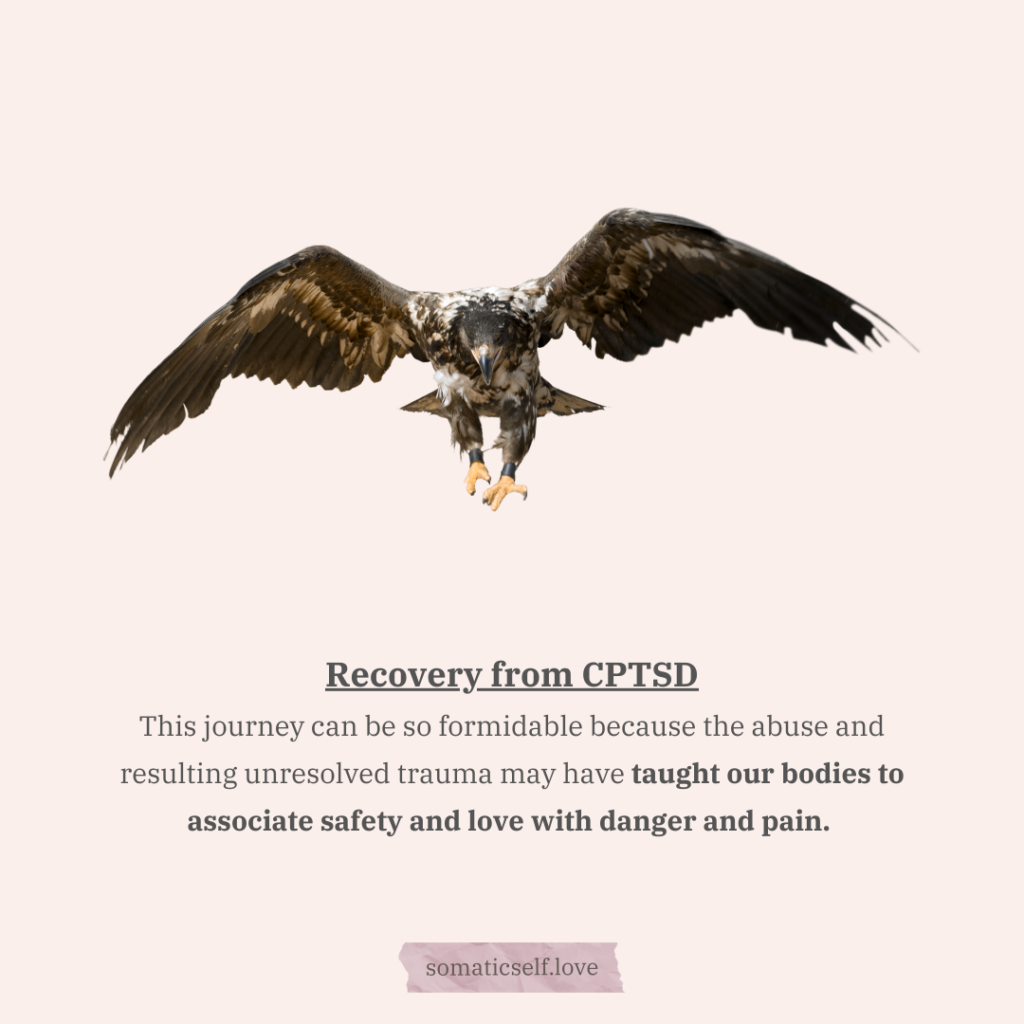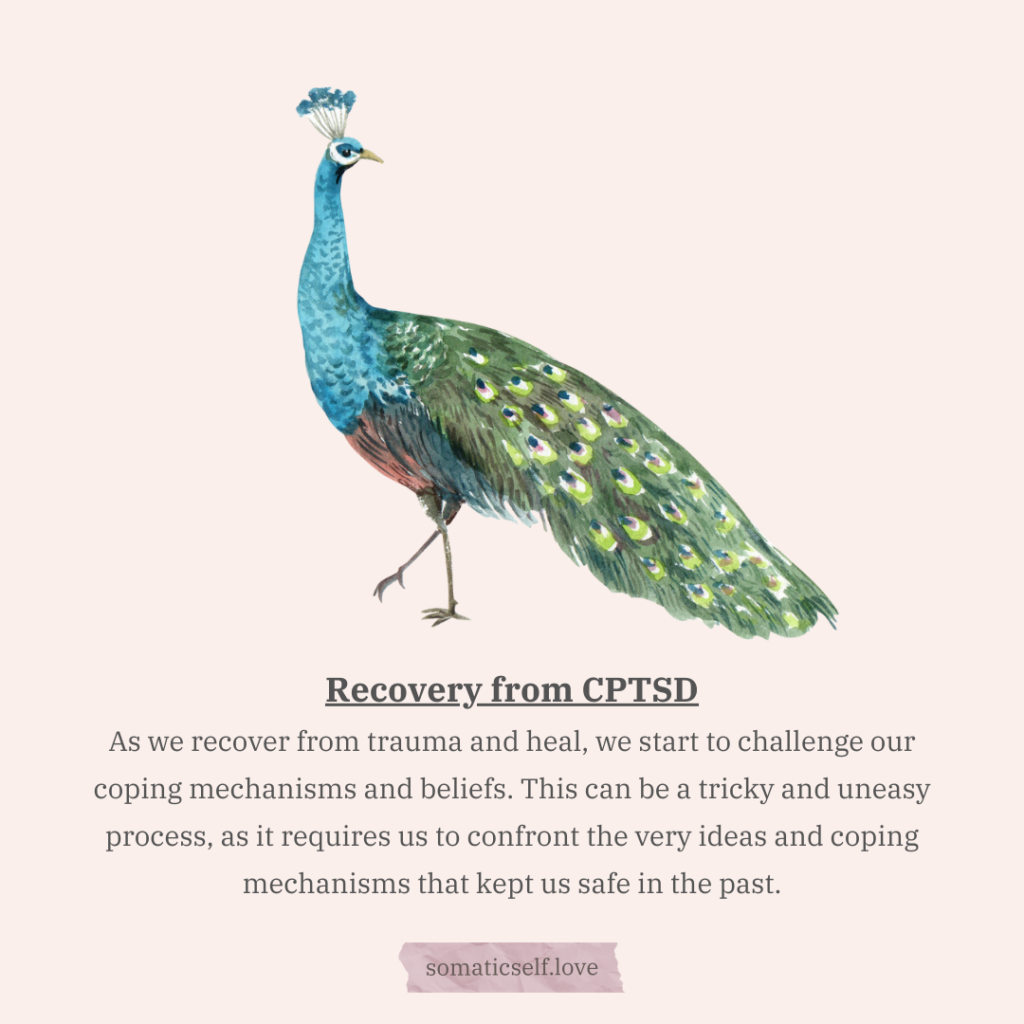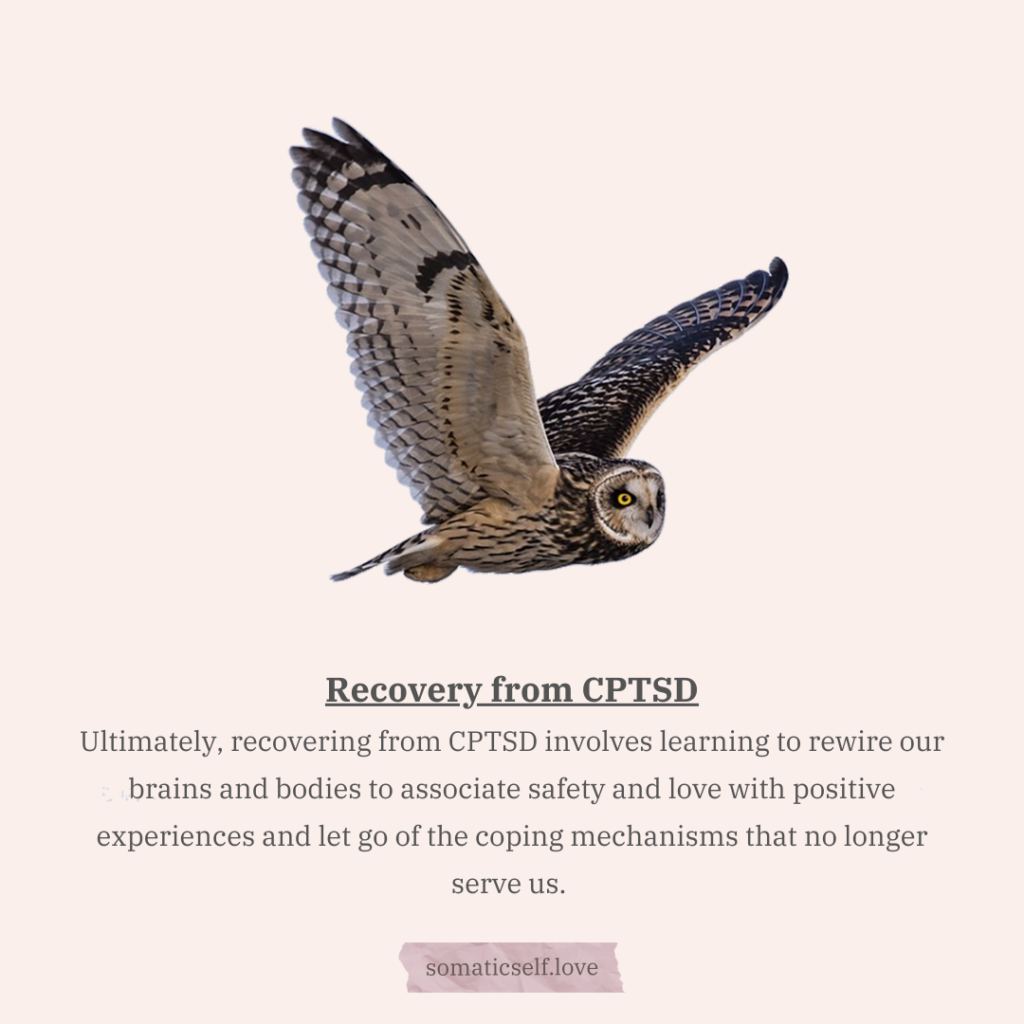Recovering from CPTSD and Feeling Safe Enough to Let Love In

Recovering from Complex Post-Traumatic Stress Disorder (CPTSD) can be a long and complex process, and it’s not uncommon for individuals to experience inner conflict and apprehension around feeling safe, loved, and belonged, even after making progress in their recovery.
One reason is that trauma may have taught our bodies to associate safety and love with danger and pain.
We Adapt to Survive

When we experience trauma, our brains and bodies adapt to the traumatic experience by developing coping mechanisms designed to protect us from further harm. These coping mechanisms may involve a heightened sense of vigilance and a belief that the world is a dangerous and unsafe place.
As we recover from trauma and heal, we start to challenge these coping mechanisms and beliefs. This can be a tricky and uneasy process, as it requires us to confront the very ideas and coping mechanisms that kept us safe in the past.
When we begin to experience feelings of safety, love, and belonging, we may feel vulnerable and exposed, triggering fear and anxiety.
This inner conflict can make it challenging to embrace feelings of safety and love fully and may cause us to create barriers or push away support and comfort.
Unresolved trauma can wiring the sensations of danger to love, making it challenging to feel safe and loved.
When we experience trauma, our brains and bodies adapt to the traumatic experience by developing coping mechanisms that are designed to protect us from further harm. These coping mechanisms may involve a heightened sense of vigilance and a belief that the world is a dangerous and unsafe place.
Our Bodies Are Trying to Protect Us From Futher Harm
Over time, these coping mechanisms can become deeply ingrained in our bodies and our subconscious minds, making it difficult to feel safe and loved.
When the sensations of danger are wired to love, it can create a pattern of emotional and physical responses that certain stimuli or experiences can trigger.
For example, a trauma survivor may feel a sense of fear or anxiety when someone tries to get close to them or express love and affection, even if there is no actual threat present.
This response is driven by the autonomic nervous system, which regulates our body’s response to stress and danger. Recovering from trauma means repairing the autonomic nervous system from hyper-arousal, heightened vigilance, and a tendency to perceive even benign stimuli as dangerous.

It’s important to remember that these feelings and reactions are a normal part of the healing process, and it’s okay to feel conflicted and unsure.
Being patient with ourselves is essential and seeking support from trusted friends, family members, or professionals who can help us navigate these feelings and emotions in a safe and supportive environment.
Ultimately, recovering from CPTSD involves learning to rewire our brains and bodies to associate safety and love with positive experiences and let go of the coping mechanisms that no longer serve us.
Strategies and Practices for Recovery
Learning to associate safety and love with positive experiences is integral to the recovery process for individuals recovering from Complex Post-Traumatic Stress Disorder (CPTSD). Here are some strategies that may be helpful in cultivating a sense of safety and love:
- Practice self-compassion: Self-compassion involves treating ourselves with kindness and understanding rather than judgment and criticism. By practicing self-compassion, we can learn to accept ourselves for who we are and cultivate a greater sense of self-love and self-acceptance.
- Build positive relationships: Building positive relationships with supportive and caring individuals can help us to feel more connected and loved. This may involve reaching out to friends or family members, joining a support group, or seeking out therapy or counseling.
- Engage in positive experiences: Engaging in positive experiences that make us feel good, such as hobbies, exercise, or creative activities, can help to rewire our brains to associate positive emotions with safety and love.
- Challenge negative beliefs: Identifying and challenging negative beliefs and thought patterns contributing to feelings of fear and anxiety can be an essential part of the healing process. This may involve working with a professional to identify and challenge negative beliefs or self-reflecting and journaling.
- Practice present-moment awareness: By practicing present-moment awareness and connecting with our bodies through techniques like breathwork and Qi Gong, we can begin to re-establish a sense of safety in our bodies and notice our emotions and physical sensations. This allows us to better understand and work with our responses to triggers or stressful situations.
Overall, learning to associate safety and love with positive experiences is a process that takes time, patience, and effort. By practicing self-compassion, building positive relationships, engaging in positive experiences, challenging negative beliefs, and practicing mindfulness, we can cultivate a greater sense of safety, love, and well-being in our lives.
